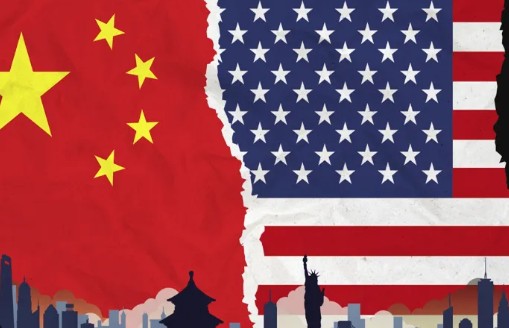
Beijing: In response to the White House’s assertion that China now faces tariffs of up to 245 percent on imports to the United States, Chinese Foreign Ministry spokesperson Lin Jian stated that the U.S. should provide the “specific tax rate figures.”
During a press briefing on Wednesday, Lin reiterated that China has consistently expressed its position on the tariff issue. He emphasized that the tariff war was initiated by the U.S. and affirmed China’s commitment to implementing countermeasures aimed at protecting its legitimate rights and interests, as well as upholding international fairness and justice, calling these measures “completely reasonable and legal.”
Lin remarked that tariff and trade wars yield no winners, but he asserted that while China does not seek to engage in such conflicts, it is not intimidated by them. He reaffirmed China’s dedication to collaboration and the removal of trade barriers. Earlier, Lin stated on X (formerly Twitter), “In a world full of uncertainties, China remains committed to joining hands, not throwing punches; removing barriers, not erecting walls; promoting connectivity, not pursuing decoupling,” adding that “China is the world’s market and a source of opportunities for every country.”
Lin’s remarks followed a White House fact sheet which indicated that retaliatory actions from China had led to tariffs as high as 245 percent on imports to the United States, a revision from the previously applied 145 percent tariff on Chinese exports to the U.S. Earlier this month, U.S. President Donald Trump imposed reciprocal tariffs on numerous countries with which the U.S. has a trade deficit, but later decided to pause these tariffs for 90 days as many countries engaged in discussions with the U.S. administration regarding trade agreements.
The White House fact sheet mentioned that over 75 countries have reached out to negotiate new trade deals, resulting in the temporary pause of individualized higher tariffs amid these discussions, with the exception of China, which retaliated against the tariffs. For now, a baseline tariff of 10 percent is applicable on U.S. imports, with Trump implementing this on all countries while applying higher reciprocal tariffs on those with which the U.S. has significant trade deficits to create a fair trading environment and protect national security.
On Tuesday, White House Press Secretary Karoline Leavitt addressed questions about China, stating that Trump’s position is “quite clear.” When asked if Trump would reduce tariffs on China to finalize the TikTok deal, she said, “The ball is in China’s court. China needs to make a deal with us. We don’t have to make a deal with them.”
Leavitt continued, “There’s no difference between China and any other country, except they are much larger. And China wants what we have—what every country wants, which is the American consumer or, in other words, they need our money.” She reiterated Trump’s openness to negotiations but emphasized that China must be willing to engage with the United States.
Trump has introduced the “Fair and Reciprocal Plan” for trade to restore fairness in U.S. trade relations and counter non-reciprocal trade agreements. His reciprocal tariffs have contributed to a broad decline in financial markets globally, impacting markets in Asia and Europe. There are concerns that these trade measures may increase inflation and hinder economic growth. Since starting his second term, Trump has maintained his stance on tariff reciprocity, insisting that the U.S. will match tariffs imposed by other countries, including India, to ensure equitable trade.
